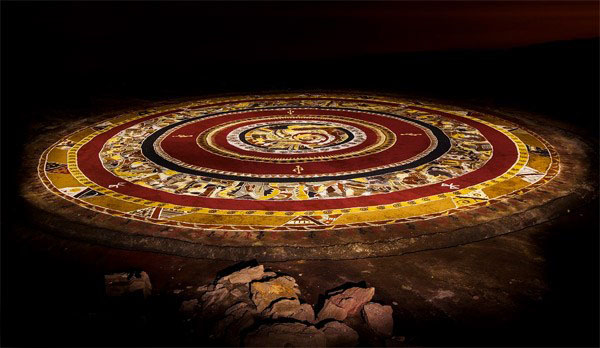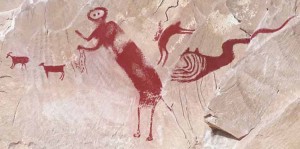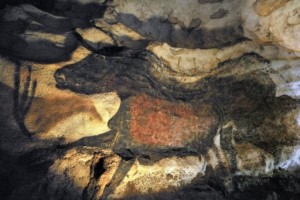Pigments & Art Kits
In 2008 Archaeologists discovered two sets of art kits a cave in South Africa. The team of researchers, led by Professor Christopher Henshilwood from the universities of Bergen and Witwatersrand, believe that the ochre was used for forms of artwork.
The two tool kits thought to be 100,000 years old, includes abalone shells, ochre, bone, charcoal, grindstones and hammerstones. The ochre – made from soft rock with red or yellow pigments – was probably ground into a fine powder by the use of quartzite cobbles, before being mixed and heated with crushed stones or bones in the abalone shells. Microscopic inspection of the abalone surfaces reveals a “high water mark” on the shells’ inner wall, as evidence that an unknown liquid, probably urine, blood, animal fats or water was used for paint mixing.
As a painting pigment, ochre is a mixture of fine clay and iron oxide that exists in four forms:
Yellow/Gold ochre: Fe2O3 • H2O, a hydrated iron oxide
Red ochre: Fe2O3, is the anhydrate of yellow ochre, which turns red when heated because heat drives off the water ligands
Purple ochre: is identical to red ochre chemically but of a different hue caused by different light diffraction properties associated with a greater average particle size
Brown ochre: (Goethite), also partly hydrated iron oxide (rust)
In addition to the Pigment, there are two other elements needed to make a usable paint: the Binder – this is required to keep the paint together and allows it to stick to the surface being painted; the Extender is a liquid that allows the paint to stretch over a larger surface area and typically urine, blood, animal fats or water would be used.
Ochre is sometimes associated with early human burials, such as the Neanderthal skeletons at Le Moustier and La Chapelle-aux-Saints. However one of the most famous uses of red ochre at a burial, was of a young man who died 23,500 years ago – the so called the “Red Lady” of Paviland. The oldest anatomically modern human remains found in the UK (now in the Oxford University Museum of Natural History), his red dyed bones were discovered between 18th and 25th January 1823 by Rev. William Buckland, during an archaeological dig at Goat’s Hole Cave in South Wales.
One mine in UK where ochre pigments are still extracted by Free Miners is Clearwell Caves (Gloucestershire). Archaeological evidence indicates that mining for ochre began in the Forest of Dean area at least 4,500 years ago. A small number of mining hammer stones, shaped by the pecking technique, have been found locally and a bear resemblance to stones found at other site mining sites, such as the Alderley Edge copper mines (Cheshire) and Les Mines De Cabrières (SW, France). Extensive iron and coal working at Clearwell Caves was there during Roman times. When the Roman Empire moved into the Forest of Dean, the local miners may have remained free from direct Imperial control on condition they supply the Romans with their produce; this may have been the origin of the Free Mining system.




